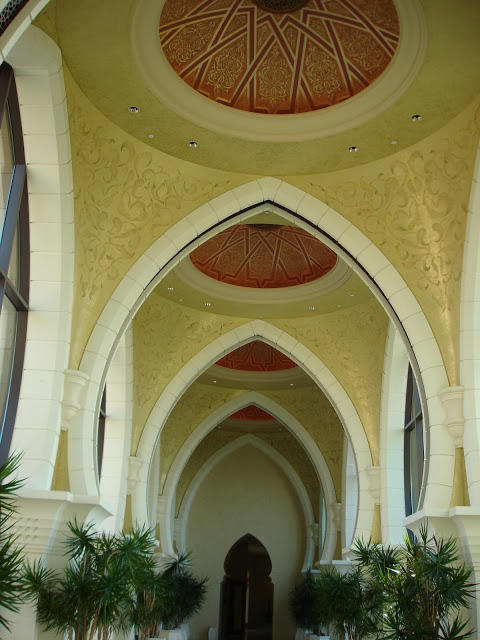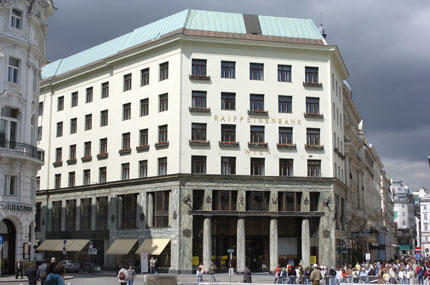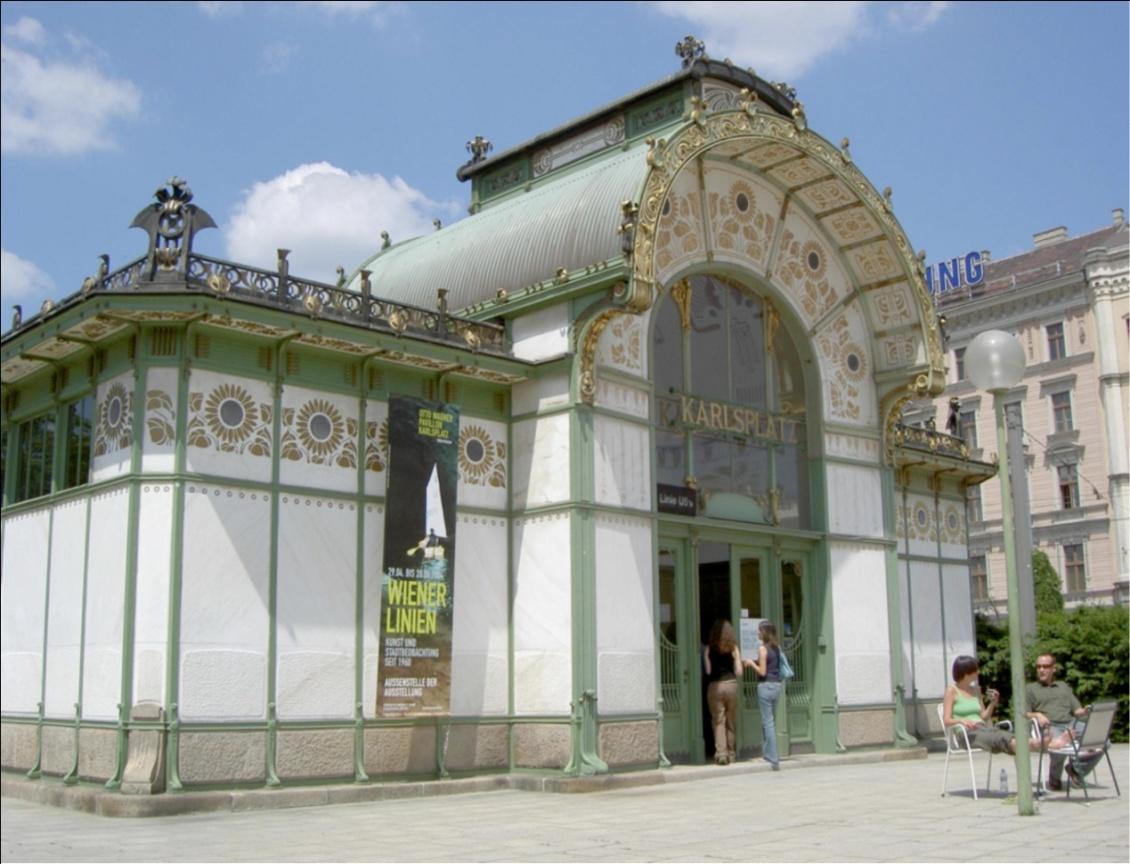Introduction
The idea of ornamentation emanated from human existence and the need to interact with the environment. Consequently, architects have used ornaments in architectural designs in various ways. However, these usages have attracted admiration and criticisms in equal measures. Hence, this essay explores Ornaments as Right or Crime: the Question of Ornament in Architectural Design with the aim of re-thinking the position of ornament in architectural designs.
The essay shall draw from existing literature. Some of the notable authors would include Christina Noble who notes that architects’ influences on structures have declined considerably, which has forced them to concentrate on architecture as a manipulation of surfaces to depict relevance for design and construction today (Noble, 2009). It explores Adolf Loos’ work as a fierce critic of the use of ornament in architectural design (Loos, 1930). James Trilling offers appreciation on the use of ornament in architectural designs as a way of capturing history and presenting inherent beauty in such works (Trilling, 2001). Other notable works would include Mallgrave (2006) and a recent article by Hakn Sağlam (2013) among other scholars in architecture.
The essay shall present a thesis statement of the study and track the development of Ornament as right or crime in history, present supporting contexts and analysis of supporting texts. It will identify the relevance of the theme in today’s architectural designs. Another section shall present Ornament as Crime as the opposing theme in the title. The essay would demonstrate a synthesis of the two parallel views to depict their relevance in contemporary architectural practices. Finally, it would offer a reflective conclusion about lessons learned.
Ornament as Right
One can argue that the use of ornament in design and construction shows constant changes and evolution based on the historical periods with the influences from people, society, industrial and technological advancement. Architects of the time find new ways of expressing their moral and physical duties in different ways. One such way is the use of ornament in architectural designs for visual fancy, aesthetic and representation of cultures and history.
From historical perspectives, one may notice that the relationship between ornament and architectural designs has developed or changed over the years as James Trilling observes that ornaments carried both inherent beauty and historical importance in architectural designs (Trilling, 2001). Ornaments could act as mere forms of expression or assertion of power. The concept of ornamentation in design has evolved from primitive approaches to modern forms that include photo mounting with computer-aided techniques in new designs. Architects seek to express their ideas and intents through the communicative abilities of their materials utilised in unique creations.
They have relied on materials to express symbols in buildings (Kruft, 1996). However, architectural ethics required architects to restrict the use of ornaments in certain locations in their designs (Sağlam, 2013). On this note, architectural design scholars have argued that architects should provide historical accounts and explanations behind ornamentation (Sağlam, 2013; Nebois, 2006).

The Gothic architectural designs have great influences in modern designs. The artists of the time managed to borrow and inculcate designs from their predecessors into their works. Consequently, such designs have remained points of reference for modern architects and proved unchanging over time. The primary point in the Gothic architecture is the use of ornament. The Gothic designs managed to incorporate major symbolic designs in architecture. One can observe all important architectural elements and ornaments in such works. However, this approach almost stalled towards the ended of the Gothic period. In this context, ornaments in designs acted as pleasant contributions to architectural works, as well as intellectual capabilities of designers.
Thierry Nebois noted that during the Renaissance period, architects such as Leon Battista Alberti, viewed ornaments as “an element separately attached on surface of buildings” (Nebois, 2006). Hence, an ornament was considered as a supplementary light, which reflected beauty. Beauty reflected internal features of a building while ornaments remained externally attached features on a structure. In this regard, architects could not use ornaments to define beauty. In addition, an ornament acted as a link between material (nature) and the architects’ creative abilities, which provided visual perfection to designs. Therefore, an ornament was an architectural material that offered richness and imagination. Moreover, the use of ornaments in any given context evolved with time.
Harry Mallgrave shows that Christopher Wren supported the use of ornaments in architectural designs (Mallgrave, 2006). Wren focused on the social and psychological relationships between ornaments and architecture as Mallgrave (2006) noted. He stressed that architecture had political roles, and public buildings acted as a country’s ornaments. Other scholars considered ornaments as integrated part of architectural processes and that ornaments were the essence of building constructions. Such authors showed that architectural processes started with ornamentation and architecture, itself, was indeed an activity of ornament (Mallgrave and Bermann, 1989).
According to Mallgrave and Bermann (1989), John Ruskin had argued that ornament was about “the essence of architecture rather than being a robe put on from outside and that apart from revealing directly the relationship of humanity with god, it reflected the internal beauty of architecture” (p. 29). In this regard, one can conclude that ornaments acted as fundamental parts of architectural designs. Thus, the ‘greatness’ of a building does not lie in construction achievements but rather in the quality of ornaments and painting (Mallgrave and Bermann, 1989).
Contemporary scholars and architects in the 1960s further reinforced the importance of ornaments in architectural designs. However, modern buildings resorted to the use of expressive ornaments rather than explicit symbolic ornaments (Sağlam, 2013). Therefore, all simplistic expressions in modern architectural designs represent ornamentation. A combination of various designs in a building turns it into an ornamented structure. Such aspects of ornamentation may include reinforced steel for fire resistance. This implies that they are comparable to the wall pilasters of the Gothic period.
When Adolf Loos categorised ornaments as crime in designs, many proponents of ornamentation responded by asserting that ornament was not a crime. The subsequent designs of 1980s focused on expression of architectural imaginations through ornaments as scholars and architects, such as Philip Johnson, Michael Graves, Frank Gehry, Zaha Hadid, Rem Koolhaas and others referred to their works as ornaments (Sağlam, 2013).
The modern practices of ornamentation have gone beyond buildings to include other elements of artistic expressions (Collins, 1998). Architects focus on ornaments to reduce costs of constructions and enhance functionality and aesthetic quality of a structure. Thus, ornament has become a practice of modern architectural designs.
Ornament as Crime
While proponents of ornament justified its usages in architectural designs, its opponents argued that it was a crime. Adolf Loos made two critical views about ornaments. First, Loos claimed that ornament was not necessary in buildings. He claimed that ornament on structures reflected decadence in society (Loos, 1930). Second, Loos noted that ornament was “a crime against the national economy in that it is a waste of human labour, money and material” (Loos, 1930).
According to Loos (1930), ornament on building was wasted labour. In this regard, one can argue that ornaments did not contribute any significant benefits to a building. In fact, ornamentation resulted into superfluous decoration and unnecessary materials, which a structure did not require to maintain its position and strength even if ornaments were purposeful and functional decorations.
Therefore, excluding any materials that did not contribute to strengthening and binding various parts a building was completely acceptable. Thus, capitalists had to know that ornaments resulted in wastage of investors’ funds.
Loos also noted that cultural progress should focus on minimal ornamentation (Loos, 1930). This implies that ornamentation was superficial decoration, which society could avoid and still progress culturally. In other words, the use of ornaments in any form of art would end completely.

Loos’ ideas of ornament as crime received some supports (Sağlam, 2013). For instance, some critics of ornaments argued that they were abstract elements that belonged to interior parts of any designed structure. However, the concept of ‘aesthetics of machinery’ emerged from developments in technology, techniques and industries and changed the course of ornamentation. Therefore, any house should draw aesthetic from its own structures and lines with the use of ornament. Therefore, critics of ornaments who considered them as enforcement over architecture argued that they were “meaningless and that the decorative value of futurist architecture was dependent only on the original use and organisation of materials which were rough, bare and in glamorous colours” (Loos, 1930).
Such views supported Loos’ claims about ornament.

Synthesis
Today’s architects are losing influences on buildings as Noble notes (Noble, 2009). Noble writes that some contemporary (and a few historic) architects, such as Matthias Kohler and Frank Barkow still grapple with the question of ornament (Noble, 2009, p. 3).
Therefore, ornaments in structures still attract controversy. Sağlam (2013) has shown that ornament has attracted controversy in relation to the “intellectual tendencies, technological resources and the standards of aesthetics belonging to the age” (p. 132). In other words, the use of ornament in artistic creation has expanded, but without an exact place for its existence. In addition, there are numerous applications of ornamentation in diverse forms and places using different approaches. Consequently, one can note that the application of ornaments in works of artistic expression has moved into different directions. Technologies brought about such changes right from the production stage.
Despite strong criticism from Loos and fellow critics, ornament has found several applications in different buildings to enhance structure designs and beauty. In this case, ornament is an object of beauty, which adds quantitative aspects of a design and reinforces its functions and relations with pure nature (materials) and architectural designs.
One must appreciate that excessive usages of ornaments may undermine the overall intent of the artist and the intended expression. Hence, it is imperative for architects to limit ornament usages to necessary areas and save costs and labour.
This essay shows that matters regarding architectural ornament have developed and changed with the history of building designs. In these processes, ornament has been regarded as an element of social and psychological functions. Hence, its use and debate continue to rage on as scholars and architect struggle to find the balance.
Therefore, it would be imperative for contemporary architects and scholars to adopt the best elements from ornament and shun superfluous and excessive usages since they cannot resist it (Brolin, 2000).
Reflective Conclusion
Scholars and professionals of architectural designs should express their supports toward architecture by adopting the best elements through unification processes. This would eliminate the distinction between monumental art and superfluous, unnecessary practices. This would enhance the complete work of art. Therefore, designs should have beauty as a distinct element of creativity, which should not undermine the functional design of materials used and functionality of a structure.
In every design in any location, one must come across some elements of ornamentation based on the efforts, thinking, creativity and design focus of the architect, who wishes to communicate through his or her work. This has promoted the relevance of ornament from the period of Vitruvius to modern periods. Therefore, architectural designs are means of communication, which architects can rely on to narrate and present their perceptions and thoughts to the public. This provides a special role for ornaments in terms of function and meaning, which may differ based on the period or age. Therefore, this essay, Ornaments as Right or Crime: the Question of Ornament in Architectural Design, asserts that architects should avoid superfluous and excessive decorative approaches and favour functional and meaningful usages of ornaments in architectural designs as the right balance.
Overall, architects must find the right way to express ideas and communicate to the public.
Reference List
Brolin, C 2000, Architectural Ornament Punishment and Return, W.W.Norton and Co, New York. Web.
Collins, P 1998, Changing Ideals in Modern Architecture, McGill Queens University Press, Kingston, Ontario. Web.
Kruft, H 1996, A History of Architectural Theory from Vitruvius to the Present, Princeton Architectural Press, New York. Web.
Loos, A 1930, Ornament and Crime, Innsbruck, Vienna. Web.
Mallgrave, H F 2006, Architectural Theory Vol. I & II. An Anthology from Vitruvius to 1870, Blackwell Publishing, London. Web.
Mallgrave, H F and Bermann, W 1989, The Four elements of Architecture and Other Writings, Cambridge University Press, Cambridge. Web.
Nebois, T 2006, Architectural Theory from the Renaissance to the Present, Taschen Publishing, Koln. Web.
Noble, C A 2009, ‘Ornament’, Forward 209, vol. 2, pp. 3-4. Web.
Sağlam, H 2013, ‘Re-thinking the Concept of “Ornament ” in Architectural Design’, Procedia – Social and Behavioral Sciences, vol. 122, no. 2014, pp. 126 – 133. Web.
Trilling, J 2001, The Language of Ornament, Thames & Hudson, London. Web.